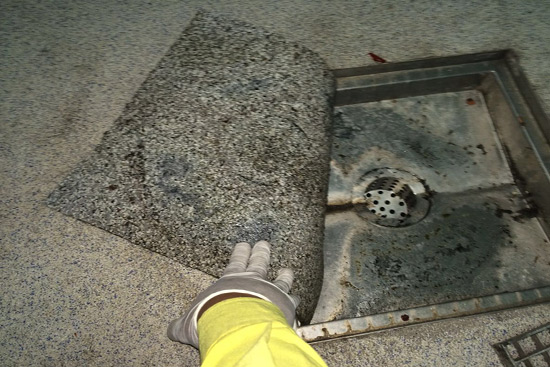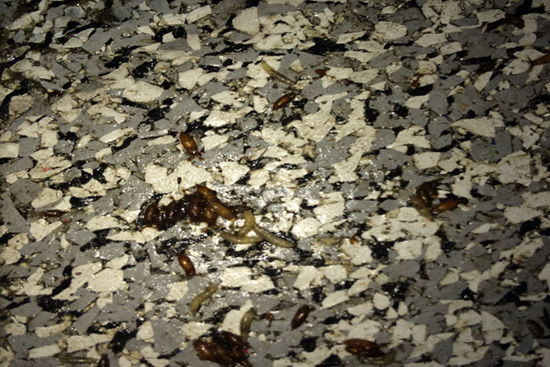Moth flies (Drain fly) are small flies, about 1/8th inch. They are usually black, but may be brown. The key identifying trait for this fly is the unique pattern of veins in its wings.
Drain fly life Cycle:
Moth flies (Drain Flies) develop by complete metamorphosis. The entire life cycle ranges from 8 to 24 days. Moth flies (Drain Flies) lay eggs in a mass of 30 to 100 in a suitable medium. These eggs hatch in less than 48 hours. The eggs form the moth fly( drain fly) are laid in irregular masses in such places as dirty garbage disposal units, water traps in plumbing fixtures, sewage plant filters and almost anywhere decomposing organic materials are found.
Drain flies:
Breed in drains, sewers, septic tanks and soil that have been contaminated with sewage.
 |
 |
Flies and Disease:
Besides contaminating food with eggs and maggots, flies can carry bacteria that cause intestinal diseases. Flies can travel from fecal material to our food very easily, carrying bacteria with them on body hairs or the sticky pads on their feet. When feeding, flies expel saliva and feces that may also contain bacteria. Sometimes flies will lay eggs or maggots on the flesh or wounds of man and animals.
Sanitation:
The key to fly control is sanitation. Adult flies are attracted by the odors of food or trash. Organic material may serve as food for adult flies or as a breeding place for fly larvae. Trash should be placed into bags and stored in sound trashcans with tight-fitting lids. Trashcans and dumpsters must be kept clean. Food scraps and spilled beverages will attract flies. Decaying organic material, like animal droppings, which might be a breeding place for flies should be removed.

